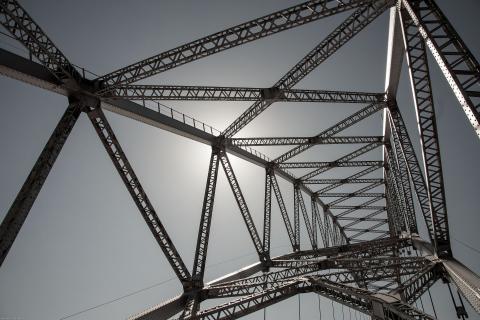Region: Global
Country: Global / Non-Specific
Sectors: Transportation
Keywords: Contractual Provisions, Rail
DocumentLink(s):
Document(s):
Railway Reform in South East Europe and Turkey - On the Right Track?4.92 MB
Document Summary:
Model Framework Border-Crossing Agreement – (English but also available in Macedonian, Croatian, Bosnian, Serbian, Albanian). Annex 4 of Railway Reform in South East Europe and Turkey - On the Right Track? by Carolina Monsalve, World Bank Report No. 60223-ECA, March 2011.
The framework agreement has been developed for South East Europe/Turkey and the European Union (EU). It aims to implement EU legislation. EU member states must ensure that the provisions contained in cross-border agreements do not discriminate between railway undertakings, or restrict the freedom of railway undertakings to operate cross-border services. The framework agreement introduces the concept of a joint border zone. Authorities of both states can carry out their controls in both national territories. Border dispatching of passenger trains can either take place on moving passenger trains or at border stations. Border dispatching and checking of freight trains can be performed either in a joint border station or in hinterland terminals. All railway undertakings that are licensed in either country are allowed to enter the border zones. The framework agreement sets out principles for open-access border-crossing by rail between the parties. It is the basis for subsequent agreements that implement the framework agreement (for instance agreements on customs, sanitary or veterinary controls or interconnection of networks).
Tracking Number:
EU_Model Framework Border Crossing (Annex 4 of Railway Reform in SE Europe and Turkey)_EN
Document Details:
Model Framework Border-Crossing Agreement – (English but also available in Macedonian, Croatian, Bosnian, Serbian, Albanian). Annex 4 of Railway Reform in South East Europe and Turkey - On the Right Track? by Carolina Monsalve, World Bank Report No. 60223-ECA, March 2011.
The framework agreement has been developed for South East Europe/Turkey and the European Union (EU). It aims to implement EU legislation. EU member states must ensure that the provisions contained in cross-border agreements do not discriminate between railway undertakings, or restrict the freedom of railway undertakings to operate cross-border services. The framework agreement introduces the concept of a joint border zone. Authorities of both states can carry out their controls in both national territories. Border dispatching of passenger trains can either take place on moving passenger trains or at border stations. Border dispatching and checking of freight trains can be performed either in a joint border station or in hinterland terminals. All railway undertakings that are licensed in either country are allowed to enter the border zones. The framework agreement sets out principles for open-access border-crossing by rail between the parties. It is the basis for subsequent agreements that implement the framework agreement (for instance agreements on customs, sanitary or veterinary controls or interconnection of networks).
Tracking Number:
EU_Model Framework Border Crossing (Annex 4 of Railway Reform in SE Europe and Turkey)_EN
Updated: October 6, 2021
